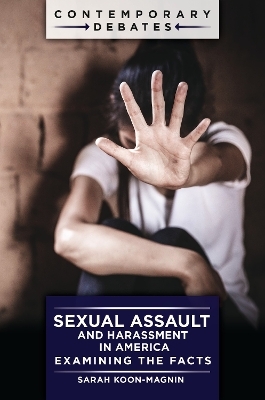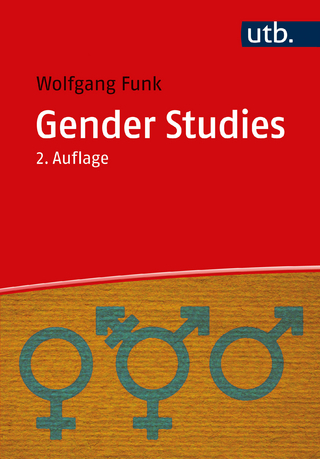
Sexual Assault and Harassment in America
ABC-CLIO (Verlag)
978-1-4408-7655-4 (ISBN)
Each title in the Contemporary Debates series examines the veracity of controversial claims or beliefs surrounding a major political/cultural issue in the United States. They do so to give readers a clear and unbiased understanding of current issues by informing them about falsehoods, half-truths, and misconceptions – and confirming the factual validity of other assertions – that have gained traction in America's political and cultural discourse. Ultimately, this series has been crafted to give readers the tools for a fuller understanding of issues, events, policies, and laws that occupy center stage in American life and politics.
This volume in the series addresses the issue of sexual violence in the U.S. It includes chapters devoted to quantifying the extent of the problems of sexual assault and harassment; demographic groups most likely to experience sexual violence; physical, emotional, and societal impacts of sexual assault; how investigations of sex-related charges are conducted; laws and policies pertaining to both victims and offenders; and sexual violence prevention and response services outside of the criminal justice system.
Sarah Koon-Magnin is associate professor of political science and criminal justice at the University of South Alabama.
Introduction
Chapter 1. Sexual assault in the United States: What we know and how we know it
Q1. Is there a single definition of sexual assault?
Q2. Is there a single agreed-upon measure of sexual assault in the United States?
Q3. Do all states define consent in the same way?
Q4. Is sexual assault a big problem in the United States?
Q5. Are all forms of sexual assault treated equally seriously by the criminal justice system?
Chapter 2. Demographic differences in sexual assault victimization
Q6. Are all people at equal risk of being sexually assaulted?
Q7. Can men be sexually assaulted?
Q8. Are there differences in risk and experience of sexual assault victimization by age?
Q9. Is the risk of sexual assault victimization greater for people with certain sexual orientations or gender identities?
Q10. Do other factors impact the risk of sexual assault victimization or perpetration?
Chapter 3. Reporting sexual assault
Q11. Do most victims report sexual assaults to law enforcement?
Q12. Do inconsistencies in victims’ statements to police mean that their claims are false or exaggerated?
Q13. If a claim of sexual assault does not result in an arrest, does that mean the assault did not happen?
Q14. Are false reports of sexual assault a common problem in the United States?
Q15. Can a sexual assault forensic exam (“rape kit”) prove whether someone was raped?
Chapter 4. The impact of sexual assault on victims
Q16. Is someone who is sexually assaulted likely to suffer negative mental health consequences?
Q17. Does the reaction that someone receives following a disclosure of sexual assault impact the recovery process?
Q18. Are most victims of sexual assault physically injured?
Q19. Is “victim blaming” a problem in the United States?
Q20. Do rape myths impact sexual assault survivors?
Q21. Has the MeToo movement had an effect on sexual assault survivors?
Chapter 5. Government and criminal justice responses to sexual assault victims
Q22. Has the Violence Against Women Act (VAWA) helped victims of sexual assault?
Q23. Are steps being taken to address the “rape kit backlog”?
Q24. Are there steps that law enforcement can take to better respond to sexual assaults?
Q25. Are there steps that prosecutors can take to better respond to sexual assault victims?
Q26. Are sexual assault response teams (SARTs) an effective method of addressing the problem of sexual assault?
Chapter 6. Government and criminal justice responses to sexual offenders
Q27. Do most sex offenders go to prison?
Q28. Do most convicted sex offenders serve time in jail or prison?
Q29. Do all sex offenders reoffend?
Q30. Are sex offender registries effective public safety tools?
Chapter 7. Prevention and response services outside of the criminal justice system
Q31. Are there professionals outside of the criminal justice system who can help victims following a sexual assault?
Q32. Do SANE programs improve outcomes for sexual assault victims?
Q33. Do trauma-informed practices help victims of sexual assault?
Q34. Does Title IX apply to sexual misconduct at institutions of higher education?
Index
| Erscheinungsdatum | 02.06.2022 |
|---|---|
| Reihe/Serie | Contemporary Debates |
| Sprache | englisch |
| Maße | 156 x 235 mm |
| Gewicht | 482 g |
| Themenwelt | Sozialwissenschaften ► Ethnologie |
| Sozialwissenschaften ► Soziologie ► Gender Studies | |
| ISBN-10 | 1-4408-7655-X / 144087655X |
| ISBN-13 | 978-1-4408-7655-4 / 9781440876554 |
| Zustand | Neuware |
| Haben Sie eine Frage zum Produkt? |
aus dem Bereich


